SERP Similarity – another one of those fancy terms often thrown around by SEO experts.
In this article, we aim to demystify this concept in simple terms and highlight its significance for your SEO and content strategy.
We will guide you in conducting SERP similarity analysis and share valuable tips and tools to streamline your workflow.
Table of Contents
What is SERP Similarity?
SERP Similarity is the practice of comparing two keywords and their related SERPs. Checking the SERP Similarity shows you the overlap between two keywords in the SERP.
SERP Similarity guides you in determining whether you should create a single article that targets both keywords or opt for two distinct articles.
The overlap between keywords is represented by the common URLs in the top 10 results on Google.
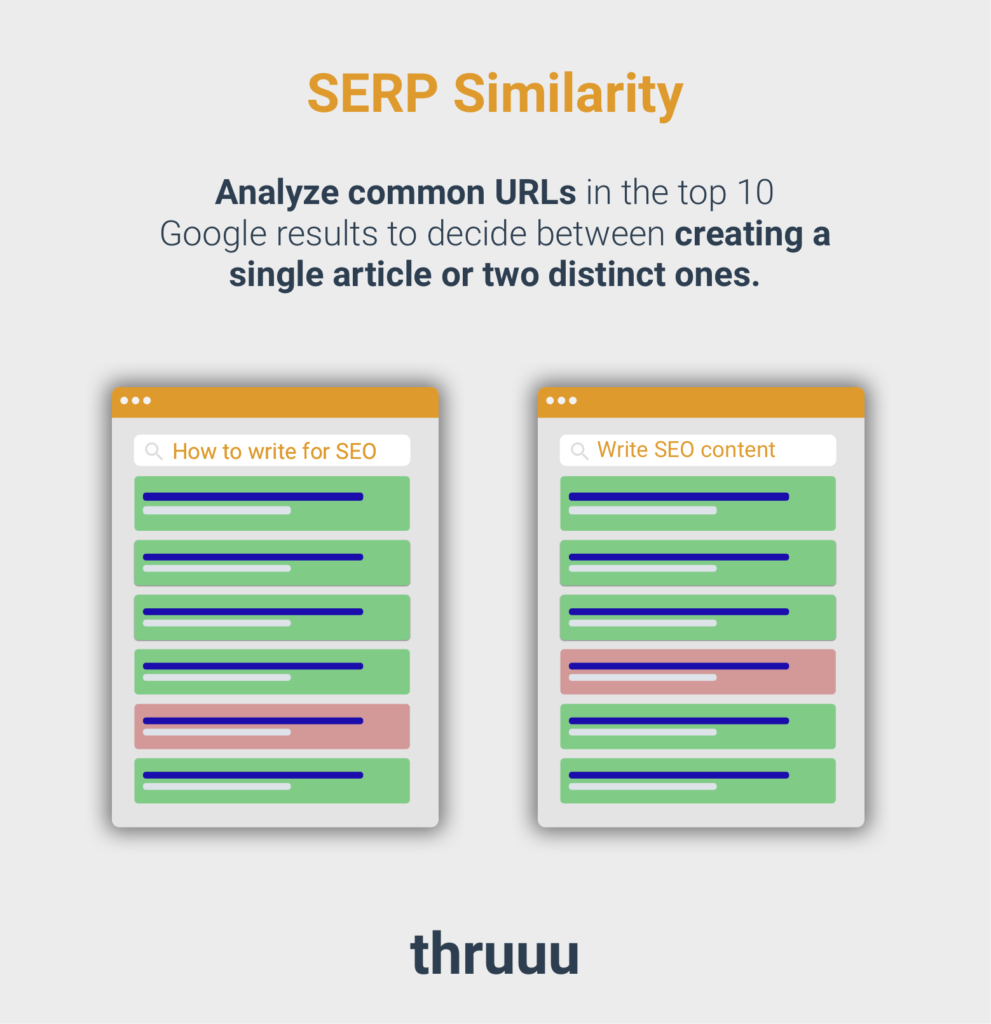
In cases where two keywords significantly overlap with several common URLs among the top 10 results, a single article covering both keywords would suffice.
SEO experts often advise that when there are four or more URLs in common within the top 10 results of Google for two keywords, creating only one article is recommended.
As illustrated in the example, let’s consider the search terms “SEO” and “What is SEO” which share at least four common URLs in the top 10 results.
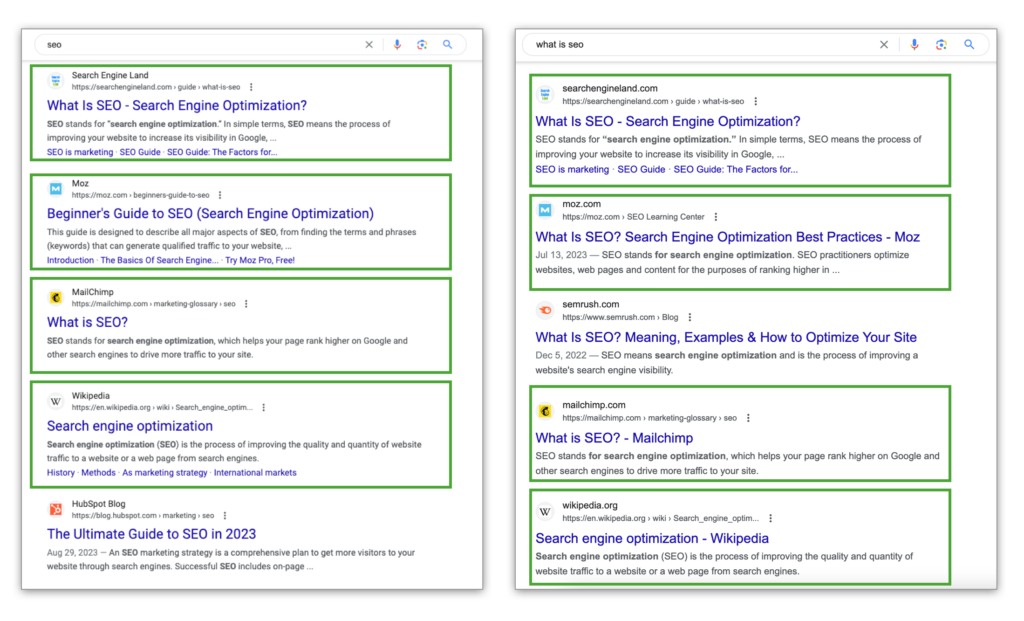
The underlying concept of SERP Similarity rests on the idea that when individuals search for two distinct keywords and Google returns “more or less” the same results, it indicates that both keywords serve the same search intent.
In our previous example, it’s highly likely that a person searching for either “SEO” or “What is SEO” has the same intent – a desire to learn about SEO.
Conversely, when examining the similarity between “search intent” and “search intent optimization,” we observe that they share only one article in common.
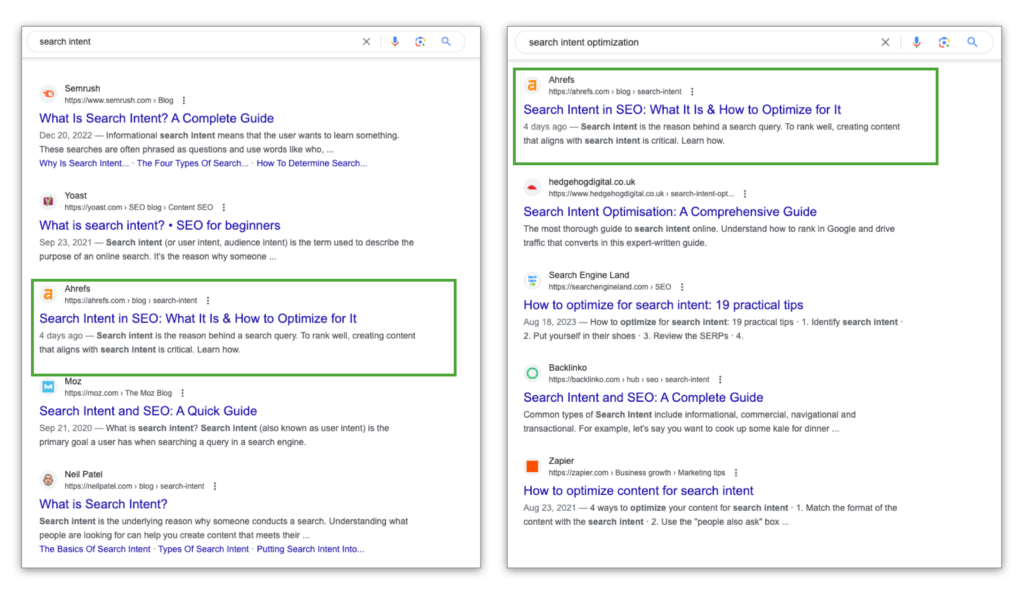
This discrepancy signifies a difference in user intent, indicating the need for dedicated articles to address each search.
We can infer that for “search intent,” a user seeks to understand what it is. In contrast, for “search intent optimization,” the user is likely already familiar with the concept and is seeking best practices for improvement.
You can watch the video below for more details or continue reading and learn more about SERP Similarity, its benefits, and the best ways to compare SERP.
Now that we’ve clarified the meaning of SERP Similarity, let’s delve into its benefits and why you should consider incorporating this SEO practice.
The Benefits of Analyzing SERP Similarity
One of the initial advantages of assessing SERP Similarity is gaining insight into search intent. Understanding the reasons behind people’s searches is critical for your SEO strategy.
By examining two SERPs and comparing the results, you can develop a better understanding of the type of content or answers users are seeking.
Another significant benefit is that analyzing SERP similarity helps you avoid keyword cannibalization.
Keyword cannibalization occurs when two or more articles target the exact keywords or closely related ones.
To revisit our example of “SEO” and “What is SEO,” if you were to create one article targeting “SEO” and another targeting “What is SEO,” they would essentially compete with each other.
Google or any other search engine will not promote both pieces of content, and only one will gain visibility in search results.
In conclusion, SERP similarity is a fundamental practice and should be one of the initial steps when creating new content.
It serves as a guide for your content strategy and assists you in making data-driven decisions.
If you still need convincing that checking similarities between keywords should be a part of your SEO workflow, let us provide practical tips on how to incorporate it effectively.
How to Check SERP Similarity?
There are two methods for checking SERP Similarity:
- Compare two SERPs manually.
- Utilize a SERP Similarity tool.
Comparing two SERPs manually involves opening Google Search in two separate windows, entering a keyword in each search window, and then comparing the results to count the common URLs.
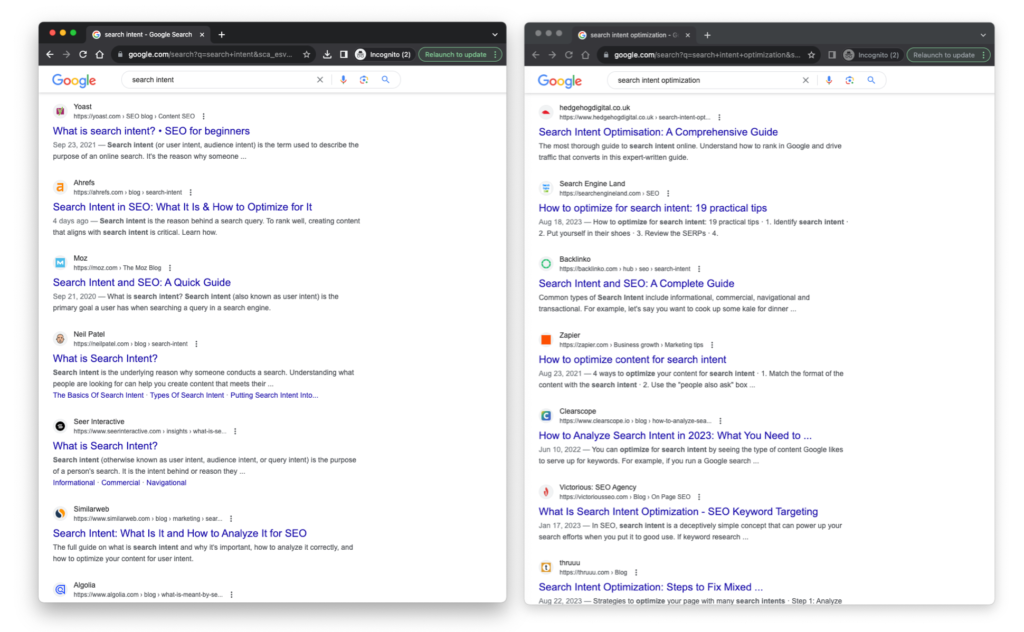
However, if you need to perform this task frequently, you’ll quickly realize it can take time and effort.
We recommend using a SERP Similarity checker for a more comprehensive view of the overlap. These tools also offer additional advantages:
- You receive key insights, including the SERP Similarity score, which indicates the percentage of common URLs on the first page of Google.
- You can conduct a SERP comparison for any Google Search, country, device, or location without needing a VPN.
How to Use a SERP Similarity Tool
We highly recommend using the thruuu SERP Similarity tool to compare common URLs between two keywords.
This tool comes equipped with a host of impressive features:
- Quickly compare two SERPs and identify shared URLs in a user-friendly manner.
- Compare any Google Search for any country, language, location, or device.
- Obtain a list of common URLs within the top 10 search results.
- Receive a SERP Similarity score and content recommendation.
Gain valuable recommendations to guide your decision on whether to create one or two distinct pieces of content.
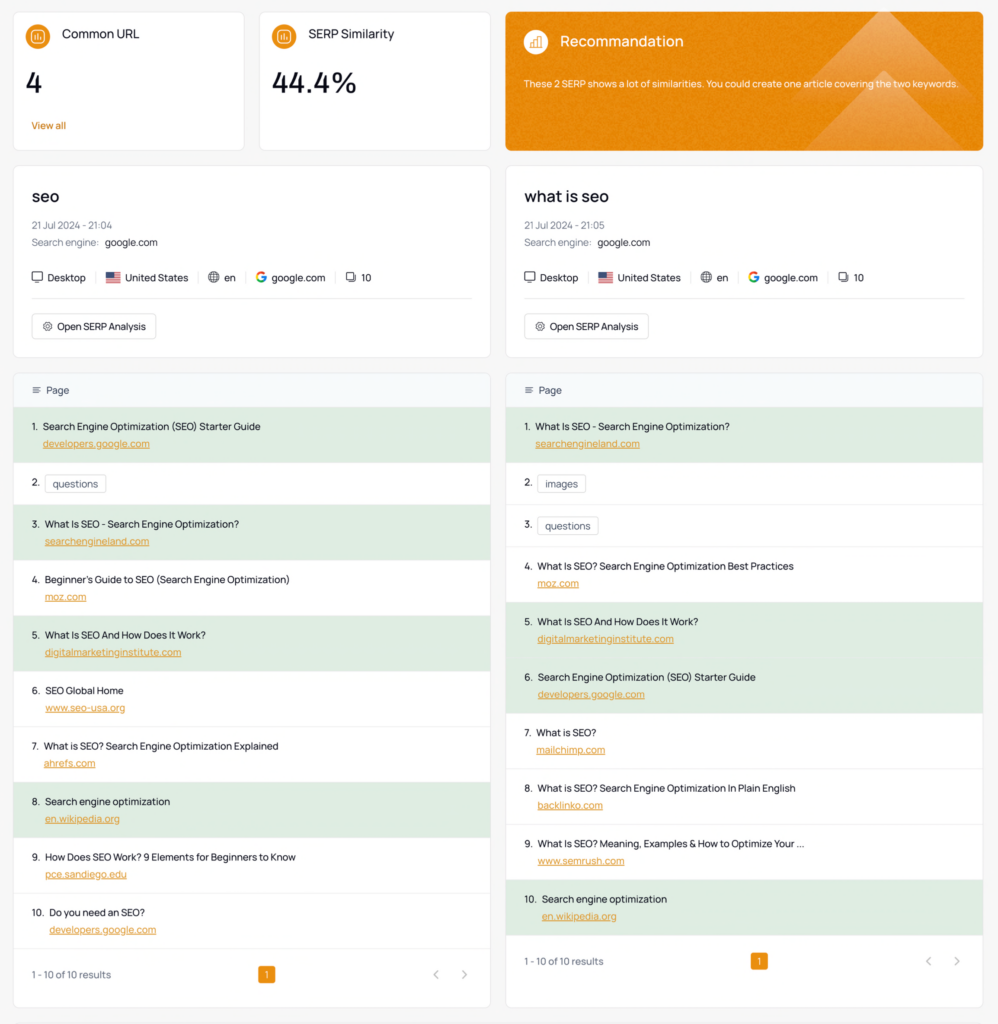
Furthermore, the SERP Similarity tool goes the extra mile by extracting on-page information, allowing for side-by-side comparisons of headings, common terms, related searches and PAA.
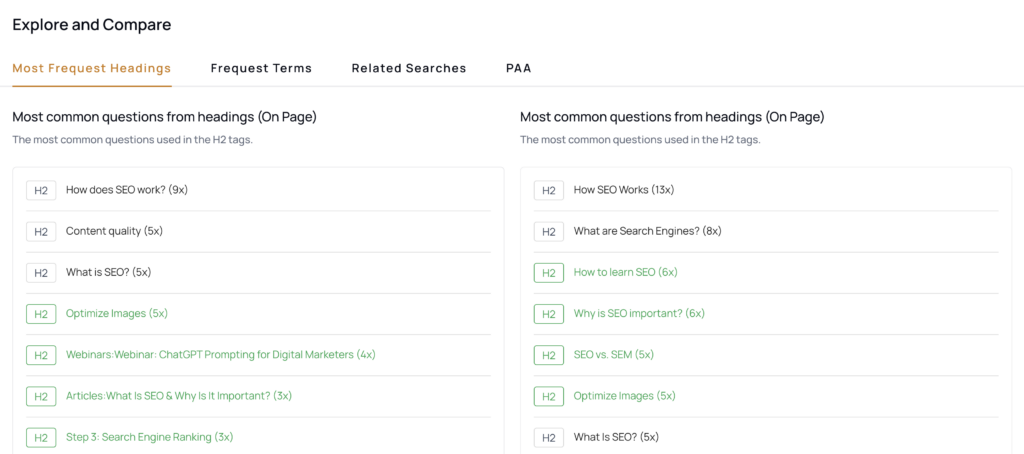
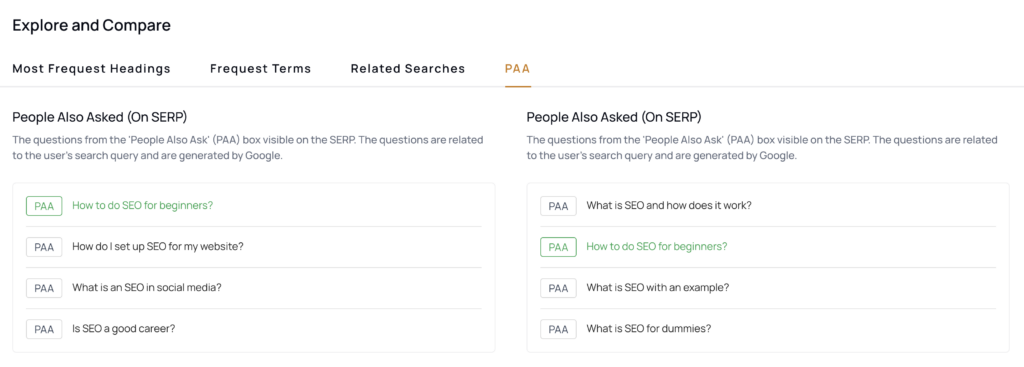
You can get started for free, and the workflow is super simple.
Here’s how:
- Once you’re logged in, follow this link to access the tool.
- Enter your keywords.
- Select the SERP you wish to analyze.
- Click on the “Compare” button.
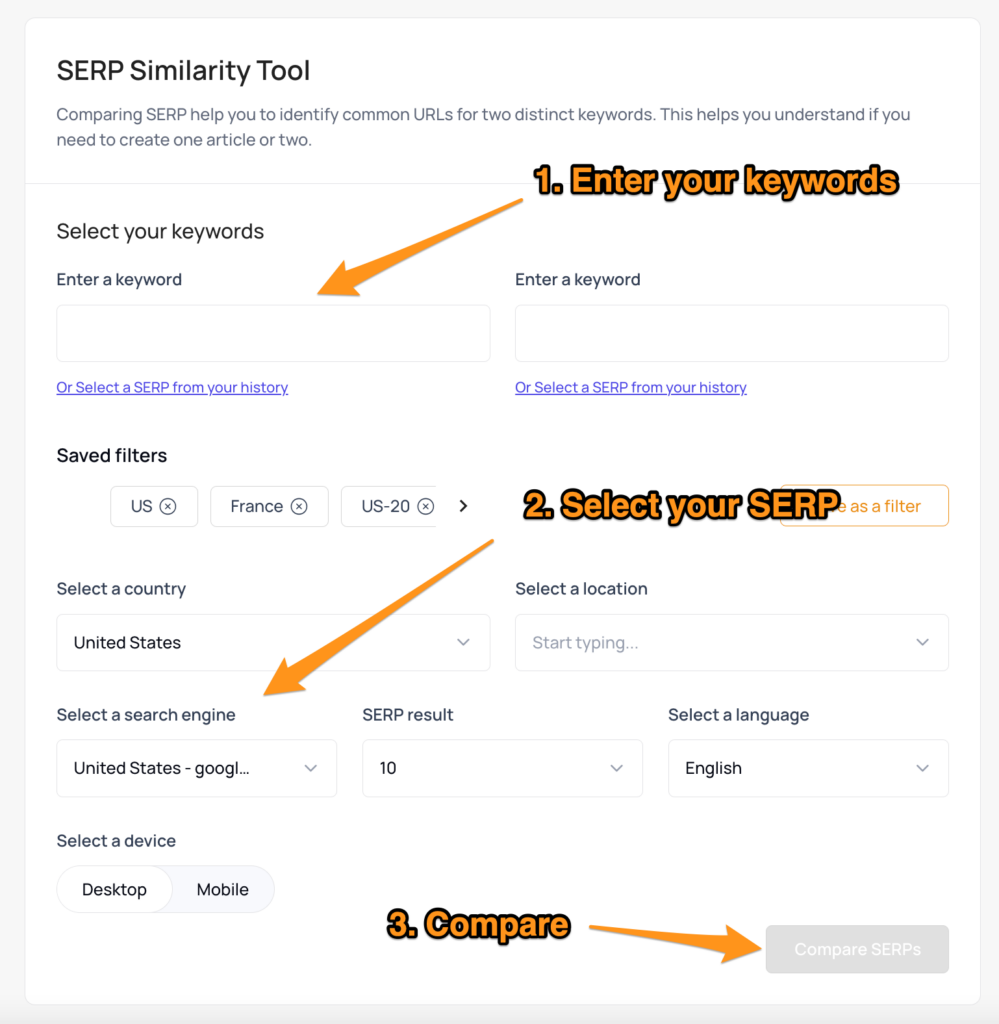
Follow our comprehensive guide to master the art of SERP Similarity and leverage the full potential of thruuu for your SEO and content strategy.
Writing One Article or Two Articles for These Two Keywords?
We’ve just explained that when two keywords or two SERPs show similarity, the recommended approach is to create a single article that targets both keywords.
We introduced the concept of the SERP Similarity score, suggesting that a score above 40% indicates the feasibility of a single article.
Now, let’s scrutinize this statement more closely and challenge what we’ve presented.
When two SERPs show 80%, 90%, or even 100% similarity, there’s no question – creating one article is a clear choice.
However, you’ll encounter situations where the SERPs show similarity between 40% and 50%. In such cases, you stand at the edge and have the option to create two articles.
Understanding Google search is similar to playing a game of supply and demand, much like a marketplace.
When a user searches, they express what they’re looking for, and Google checks its catalog (index) to figure out what to provide, typically the best articles.
But sometimes, the supply may be inadequate, or there might not be sufficient “good” articles to address the search intent. In such scenarios, Google selects the closest available articles that align with the search intent.
When you find yourself in such a situation, our advice is to conduct a thorough SERP analysis and a user intent analysis.
If you observe a deficiency in the answers or a lack of compelling content, feel free to craft two dedicated articles, even if the SERP Similarity tool suggests that creating a single article is the way to go.
SERP Similarity at Scale is Keyword Clustering
Throughout this article, we’ve explored how to compare the similarities between two keywords to guide your content strategy and determine whether to create one or two articles.
But what about scaling this process?
How can you compare the similarity of hundreds or even thousands of keywords?
This is where keyword clustering comes into play. It involves categorizing a large set of keywords based on their SERP similarity, effectively grouping them by topic.
By employing keyword clustering, you can turn a long list of keywords into a structured SEO content plan.
Our SEO Content solution offers an advanced keyword clustering tool. All you need to do is upload your list of keywords, and thruuu will handle the rest.
The results are presented as a list of keyword clusters.
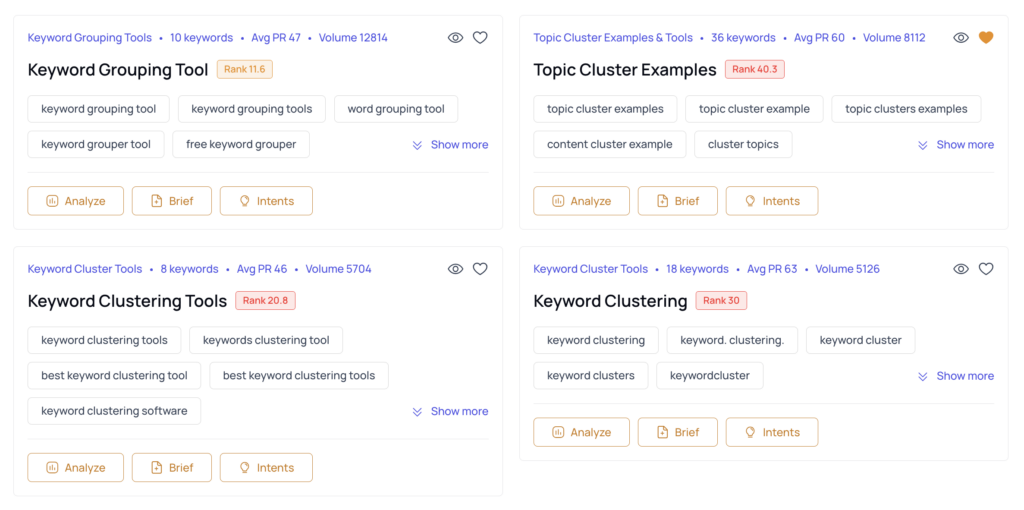
Keywords within the same group share a SERP Similarity score of 4+ URLs in common within the top 10 search results.
Each group represents a distinct topic. Select the ones that align with your goals and build your content plan.
If you’re interested in delving further into this topic and expanding your content creation at scale, we recommend exploring these guides:
- The Steps to Creating a Successful Topic Cluster with thruuu
- Topic Clusters: Increase Traffic 100x Step by Step (Case Study)
Get Started for Free and Cluster 500 Keywords
Organize your content for improved SEO and user experience with our Keyword Clustering and Topic Clusters feature.
